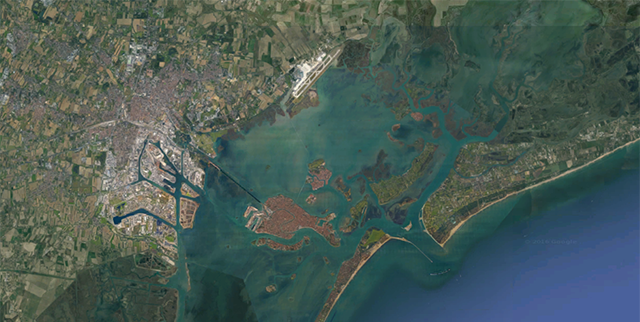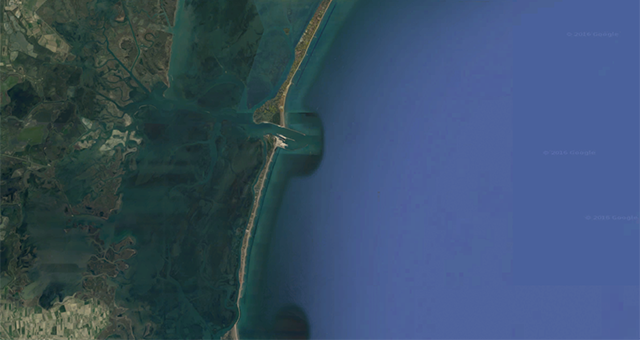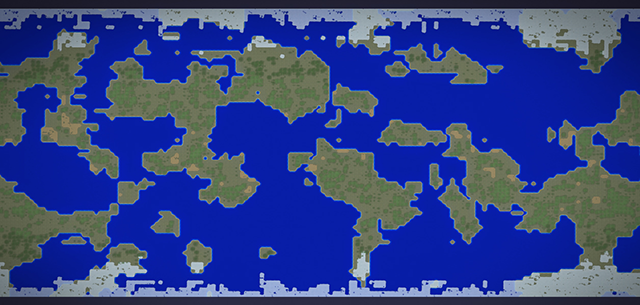I had this on my mind, blocking my ability to work and needed write it down. This blog is only tangentially related to Maia and video games development, but might be an interesting read none the less. Feel free to ignore it, Maia 0.59 is out in about a week!
I’m sad to report to you that the world ended a decade ago.
I was working in simulations, engineering maritime systems at a British offshoot of a large Russian/Swedish corporation. Really amazing stuff for the time. Full scale functioning ship’s bridges set on hydraulics, giant screens projecting from server racks mounted with dozens of NVIDIA 8800GTXs.
I was the sole UK contractor, they needed someone who could work without communications barriers and time differences. More importantly they needed someone who had knowledge of the UK armed forces and could work with sensitive data that the MOD wanted to stay in the country.
One day we got a bug report from the Navy. They had loaded up the latest release with the newly released future tide data. Dover was under the sea. As were several parts of Southampton and other sites around the country.
I was tasked with debugging the error. I painstakingly went through the visual models comparing heights with OS and satellite data. There was no error. A high enough tide would in a few years encroach on a significant amount of the UK coast. The data I was working from was not partisan or trying to make a point. It was a fact of life the military were dealing with. The sea was rising and fast.
My next job was in Scotland, and again urgent. Sea defences were being overwhelmed at a certain site and were having to be reinforced. I had to update our visual models to show this. The work was being done in a hurry. The North Sea storms were stronger now, and more frequent than ever, critical infrastructure was at risk.

A few months later, in the dead of winter, I shipped out to work in Venice. The Italian Navy and cruise companies required a new simulator. Unfathomable amounts of money were being talked about. This was big.
Venice is a city built in a lagoon. It’s been there in several forms for almost two millennia – and it was about to change more than it ever had before.
Venice floods. The Venetians have dealt with this since the founding of the city but now it was different. Floods were happening more and more often, with dramatic results. The cruise ships visiting the city were becoming more of a danger as the shallow lagoon was no longer subduing the bow waves escaping from the dredged channels. Schedules were being torn up left and right to ensure they waited to travel at lower and lower tides.
The constant threat of catastrophic flooding had become too much and the Lagoon was to be sealed. Huge sea barriers were to be built to disconnect from the ocean. Miles upon miles of shorelines were to be raised and reinforced. This project which came to be known as MOSE, was dreamt up in the year of my birth, but had become more and more urgent during my lifetime. That urgency had now peaked.

As well as the detailed plans for this massive infrastructure project I was given almost infinite resources to capture the data needed to produce a visual model of Venice. With my translator, the head of the Venetian Naval school, and the Mayor of the city and several dozen bottles of Prosecco sparkling wine, we commandeered vessels all over the lagoon. I took over twenty thousand images of the coastline over several trips to the region.
I did a lot of work on the simulator, but eventually it started to interrupt my degree work at Bournemouth and I handed it off messily to the far more focused team in Sweden. I hear they did a top notch job of it.
The MOSE project is, I believe, mostly completed, which is for me very heartening. Losing the priceless historic city to the sea would have been a loss for all mankind. However, it is a small victory in a war we have sadly already lost. The apocalypse is here.
This last summer was the hottest since records begun. The last sixteen months have seen global temperatures at levels never seen before. You don’t have to believe 99% of the world’s scientists on this, you don’t have to believe the Pope, just buy a thermometer and go dip it in the sea. The spike in global temperature does not follow any natural trends, it is a sharp sudden jolt in the graph that clearly correlates against human industrial activity.
I spent these hottest months working on Maia from an orchard in Greece, and I witnessed the effects. The orchard owners produce honey and have thousands of beehives. This year however the heat had caused the flowers on most plants in the region to fail. The pollen the bees needed to perform their task never came. The bees had to be given bricks of dried pollen bought wholesale, an expensive and unsustainable compromise.

The few trees that survived the heat and did bring fruit had further issues. The temperature was causing the oranges and lemons to spoil on the trees. The seeds inside a lot of them had sprouted due to abnormal heat at night and unusual hormone levels in the trees. I’ve seen this before, but never to this degree. It was scary.
Back in the 90’s, as a little one, I booted up the demo a game on my RISC OS Acorn computer. It was called Global Effect. The soundtrack is still one of the best game soundtracks of all time in my book. The game was about simulating the planet. I spent a lot of time desperately planting trees on the edges of the deserts of a doomed world. I loved that game, and it in many ways inspired some of the mechanics and back story of Maia.
In 2011 I decided to make my own world simulator. A silly little experiment really, but I wanted to see what our modern climate models would look like in a game. The game wasn’t fun. I gave up. The model was hitting an odd edge case. When CO2 in the atmosphere hit 400ppm the planets being simulated would go into an irretrievable death spiral.
I did not realise that this was not a bug.

In September 2016, planet earth hit a high of 400ppm CO2 in the atmosphere.
If we are to survive, we need to treat this issue as the immediate threat it is. A change in temperature of a few degrees will render much of our arable land unusable, we will face a food crisis that will be unsolvable. We need to create a global cooperative effort to stop the change. We need to be building fusion reactors worldwide by 2020. We need terawatt hour grid level power storage solutions for renewables. All fracking and oil exploration needs to be wound down in this decade. To allow this opposition to new designs of low waste fission reactors being built must stop. All transport networks must be electrified. A carbon tax may or may not help, but it must be done with all of the above. Billions of dollars must be put into each of the above.
After that we need to do some seriously drastic things. Things that will be expensive, potentially unethical and even more politically difficult than the first step. If you’ve played Maia you might know where I am going here. We need to begin geoengineering, whilst we still have the economic ability.
We need to start spraying sulfate aerosols into the stratosphere. The fine particles will change the albedo of the planet to allow cooling. This will require every single space agency, airforce, environment agency and climate scientist on the planet working in unison to achieve. It sounds impossible but the alternative is the deaths of billions.
We then need to begin reforesting equatorial regions (temperate forests are less effective for carbon sequestration), building new (rain)forests and ecosystems and providing the people (mostly farmers) that this would displace with meaningful, dignified reparation for what it will take from them.
We need to do this now. The MOSE project, from it’s first political inception, took half a century to come to fruition.
We, realistically, have ten years.
Colonising a planet like Maia should be a grand goal for humanity. Not a necessity.

